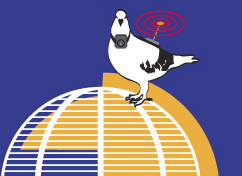Wendy Chun
Visitor

Moderator
| Posts: 2 |   |
Karma: 0
|
Welcome and Introduction - 2006/05/15 17:28
Hello all,
Welcome to the Transvergence 2 online discussion. I’m looking forward to a week of thought-provoking discussion between the authors and the audience. Today, I want to make some general comments about the theme, invite the authors to expand on their ideas and pose some specific questions.
The transvergence 1 (May 1-7) discussion, with its focus on questions of responsibility and code, sets up our discussion nicely. As Inke Arns points out in her introduction, the topic of transvergence is supposed to go beyond the disciplinary and beyond the unsustainable binaries between us/them, good/bad, free/market. The key question is: "to what extent can we think of transvergence as a vector away from these divides, modeling practices across the domains of culture, creativity, academia, and entrepeneurship to dream up a responsible future?"
Transvergence is an intriguing and tricky term. Crossing notions of transdisciplinarity and convergence, it emphasizes new possibilities and ideas—unexpected creativities—that become evident when diverse disciplines intersect. Transvergence, in opposition to convergence, does not end at a common point—it is a bending always on the move, a crossing that can never end, a vector that always points beyond. Rather than just being in the midst of, or pertaining to 2 or more disciplines, transdisciplinarity crosses disciplines, but also promises to go beyond them (trans as in transcendence). Transvergence is also arguably linked to transnational corporations—companies with international stock ownerships. New global relations of capital and labor.
Each of the papers on this panel presciently takes on a neat separation—a sequestering of art or knowledge—and looks for transvergences that challenge traditional understandings and terminology. Each of them starts from a term we seem to understand, but then puts it in motion—bends it a certain way to bring out what is new or different.
Steve Anderson argues that nostalgia for past media forms prevents us from bringing a critical perspective to the “prolific but neglected sphere of commercial-experimental practice.” Specifically, he argues that music videos, design-oriented short films and motion graphics can help us understand emergent relations between vision, phenomenology and representation. Thus, we need to come to terms with the digital avant-garde by engaging mobile practices, unencumbered by the burden of past media and analytic paradigms.
Jon Ippolito and Joline Blais also deal with a “spreading” of art practices, but they focus on art as antibody. That is, art as a response to the ethical crisis caused by technology’s infection of society. In identifying art as an antibody that infiltrates stock markets, courtrooms and mobile phones, they are also—as the title of their paper makes clear—redefining art. Art that qualifies for these new powers may not be recognizable as art and creators of these works may call themselves “scientists, activists, or hackers.” Society, they argue, “must understand and support the critical role played by all stages of this creative spectrum if art is to guide us through the unpredictable future technology has in store for us.”
Ned Rossiter seeks both to investigate and invent “organised networks” as new institutional forms. Organised networks, like the digital communications media from which they are based, are inherently collaborative and distributive. Universities in advanced economies, he argues, have not been able to deal with the current challenge of global networks because they have adhered predominantly to strictures of intellectual property and to cumbersome bureaucratic systems. Rossiter seeks to establish mechanisms to distribute the educational resources common to networks.
At this point, I would like the authors to expand on their arguments and to please correct any errors in my summary. Since you all only have 20 minutes at ISEA, perhaps you could offer a reading of a specific work that is “digital avant-garde,” “art as antibody” or organized network? I also have some specific questions to guide your elaboration:
1. To Steve, how exactly do these artworks constitute an avant-garde? Again, perhaps you could address this issue through a reading of one of these works? Also, you’re not arguing for leaving all analytic paradigms behind (you are, after all, still using the term avant garde)—what “crossings” between the new and old, as well as between disciplines, do you find useful?
2. To Jon and Joline, your formulation of art as antibody and your assertion that antibody art may not be recognizable as “art” resonates strongly with Marshall McLuhan’s argument in _Understanding Media_. There, he argues that art may be able to provide immunity from our technological “amputations” and that an artist “is the man in any field, scientific or humanistic, who grasps the implications of his actions and new knowledge in his own time” (64-6). To what extent is your formulation in line with McLuhan’s diagnosis of the impact of electronic (mainly televisual)networks? Also, can art also serve as virus—as a form of contamination, as the disease, rather than the antibody?
3. To Ned, to what extent are organised networks also hierarchical (i.e. the distributed structure of the Net also depends on a system of backbones etc.) or supportive of hierarchies? This is *not* to say that all networks are hierarchical, but to ask: to what extent can organised networks be made to serve the bureaucratic systems against which they seem to define themselves? Can the “trans” in other words be a trans between the collaborative and the hiearachical?
Also, I find the divergences between these projects fascinating. As well as talking more about their own projects, I would love for the authors to comment on each others’ formulations (this is perhaps appropriate for a discussion about the “trans”). Is the digital avant garde art as antibody? Do organized networks help us understand the emergent relations to the perception and construction of space, time and bodies? Can antibodies be forms of organized networks?
Looking forward to an exciting week of discussion!
best,
whkc.
|
